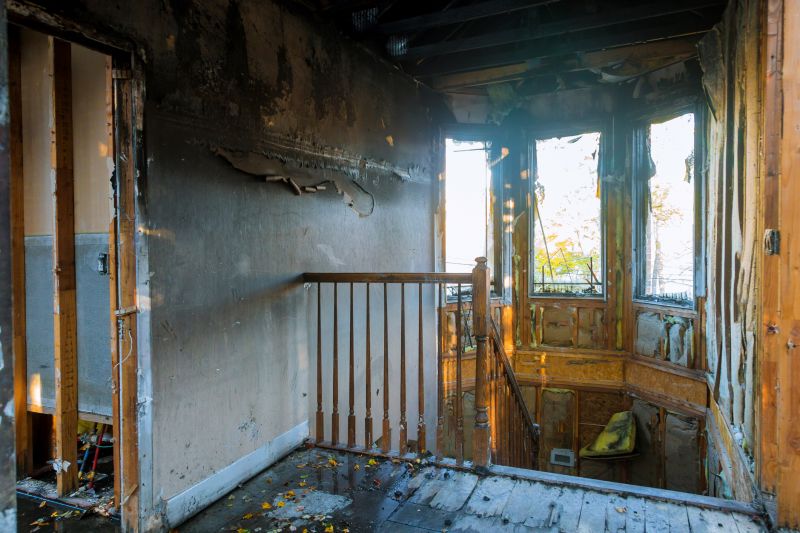Leading Fire Restoration Equipment To Support Your Recovery Efforts
Equip yourself with industry-standard products designed to handle fire damage cleanup and structural repairs efficiently.
 Fire restoration products are essential tools and materials used to repair and rehabilitate structures affected by fire damage. These products help mitigate further deterioration, remove smoke and soot residues, and restore the integrity of the building. In fire-affected areas such as Flagstaff, AZ, where wildfire risks and fire incidents can be significant, having access to reliable restoration supplies is vital for property owners and restoration professionals alike.
Fire restoration products are essential tools and materials used to repair and rehabilitate structures affected by fire damage. These products help mitigate further deterioration, remove smoke and soot residues, and restore the integrity of the building. In fire-affected areas such as Flagstaff, AZ, where wildfire risks and fire incidents can be significant, having access to reliable restoration supplies is vital for property owners and restoration professionals alike.
Top Overall Option
Multi-Purpose Fire and Smoke Damage Cleaner
A versatile cleaning solution designed to effectively remove soot, smoke residues, and odors from various surfaces. Suitable for use on walls, ceilings, furniture, and other structural elements, this product helps streamline the cleaning process during fire restoration efforts.
Types of Products For Fire Restorations
Soot and Smoke Residue Cleaners
Specialized solutions formulated to break down and remove soot and smoke deposits from surfaces, aiding in thorough cleaning.
Odor Neutralizers
Products designed to eliminate persistent smoke odors from indoor environments, improving air quality.
Fire-Resistant Sealants
Materials used to seal cracks and prevent the spread of smoke and fire, enhancing structural safety.
Water-Based Fire Damage Sprays
Sprays that help suppress residual smoke and soot while preparing surfaces for further restoration work.
Structural Repair Materials
Includes fire-resistant drywall, framing, and reinforcement products for rebuilding damaged structures.
Heavy-Duty Degreasers
Powerful cleaning agents for removing grease, soot, and charred residues from surfaces.
Air Scrubbers and HEPA Filters
Equipment used to filter airborne particles, smoke, and odors during and after cleaning.
Fireproof Paints and Coatings
Protective coatings that resist ignition and help contain fire spread in vulnerable areas.
Personal Protective Equipment
Gear such as respirators, gloves, and coveralls designed to ensure safety during restoration work.
Dehumidifiers and Drying Equipment
Tools used to remove moisture from structures, preventing mold growth and further damage.
Thermal Imaging Cameras
Devices that help identify hidden hotspots and moisture intrusion during the restoration process.
Cleaning Cloths and Sponges
Absorbent tools for manual cleaning and surface preparation.
Fire-Resistant Insulation
Insulation materials that provide added fire protection in rebuilding efforts.
Chemical Fire Suppressants
Solutions used to suppress small fires or prevent reignition during early stages of restoration.
Electrostatic Disinfectant Sprayers
Equipment for applying disinfectants and deodorants evenly across surfaces.
Bio-Enzymatic Cleaners
Biological solutions effective at breaking down organic residues and odors.
Popular Choices
Widely used for removing soot and smoke stains from various surfaces, aiding in cleaning efforts.
Commonly selected to combat lingering smoke odors and improve indoor air quality.
Popular for sealing cracks and joints to prevent smoke infiltration and enhance safety.
Effective for filtering airborne particles and improving air quality during restoration.
Frequently chosen for cleaning charred and greasy surfaces after fire damage.
Applied to vulnerable areas to add a layer of fire resistance in rebuilding projects.
Essential for controlling moisture and preventing mold growth in fire-damaged structures.
Commonly used by professionals to detect hidden hotspots and moisture intrusion.
Standard safety gear for workers handling fire restoration tasks.
Popular manual tools for detailed cleaning and surface preparation.
Gaining popularity for odor removal and organic residue breakdown.
Increasingly used for even application of disinfectants and deodorants.
Chosen for rebuilding efforts to enhance fire safety in structures.
Effective fire restoration involves a combination of cleaning agents, protective barriers, structural repair materials, and specialized equipment. Fire damage can leave behind charred surfaces, lingering odors, and compromised structural elements. Restoration products are designed to address these issues comprehensively, ensuring that affected properties are returned to safe and habitable conditions. From heavy-duty cleaning solutions to odor neutralizers, the variety of available products caters to different levels of damage and restoration needs.
Choosing the right products depends on several factors, including the extent of fire and smoke damage, the materials affected, and the desired outcome. Professional-grade products often feature advanced formulations that improve cleaning efficiency and odor removal. It is also important to consider safety features, ease of use, and compatibility with existing building materials. Proper application of these products can significantly enhance the restoration process, reduce repair time, and improve the overall quality of the results.
Restoration efforts should always prioritize safety, proper ventilation, and adherence to manufacturer instructions. Whether you are a homeowner managing minor smoke damage or a contractor handling large-scale fire repairs, selecting appropriate products is a crucial step. Investing in high-quality, effective fire restoration supplies can make a notable difference in achieving thorough and lasting results after fire incidents in Flagstaff, AZ.
Key Buying Considerations
- Extent of fire and smoke damage to determine the type and amount of products needed.
- Compatibility of cleaning agents with different surfaces such as wood, drywall, and fabric.
- Effectiveness of odor neutralizers in eliminating persistent smoke smells.
- Safety features and proper handling instructions for chemical products.
- Ease of application, including spray, wipe, or brush methods.
- Availability of protective gear for safe handling during restoration work.
- Compatibility with existing building materials to avoid damage.
- Durability and long-term effectiveness of fire-resistant coatings and sealants.
- Power and capacity of equipment like air scrubbers and dehumidifiers.
- Professional vs DIY grade products based on the scope of restoration.
- Regulatory compliance and safety standards for fire restoration supplies.
- Cost considerations balanced with product effectiveness and quantity.
- Brand reputation and reviews from other restoration professionals or users.
- Availability of customer support and guidance from suppliers.
- Environmental conditions of the site, such as humidity and airflow, affecting product performance.
